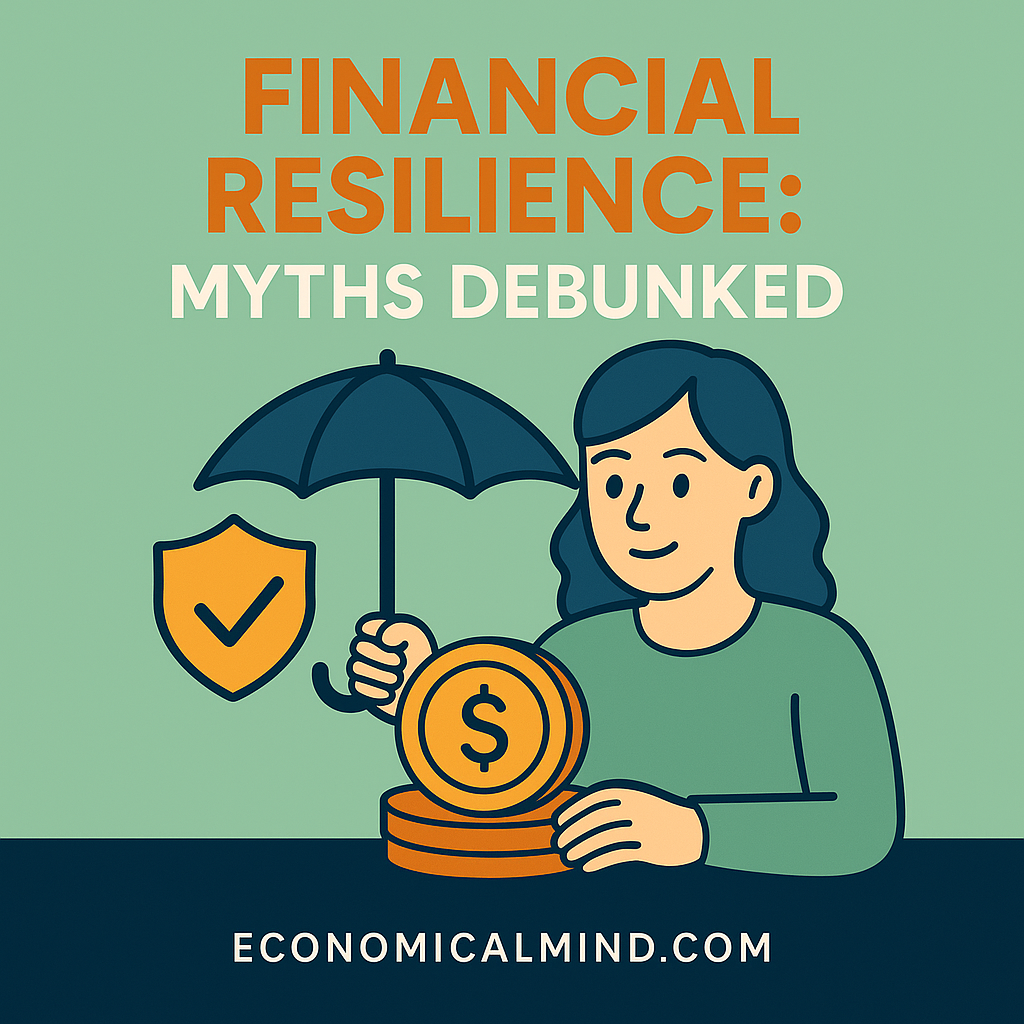
Financial resilience is one of those terms that sounds straightforward—having the strength to handle money challenges—but in practice, it’s often misunderstood. Many people believe it’s all about having big savings or perfect budgeting habits. In reality, it’s much deeper than that.
Let’s unpack the most common myths about financial resilience—and uncover what it actually means to build lasting financial strength.
Myth 1: Financial resilience means having a large emergency fund
An emergency fund is important, but resilience isn’t defined by one number in your bank account. Life can throw curveballs that even a six-month cushion can’t fix.
True resilience includes flexibility—like the ability to earn additional income, access credit responsibly, and adapt your spending when circumstances change.
Myth 2: Being financially resilient means never using debt
Avoiding all debt sounds responsible, but it’s not always realistic—or strategic. Using debt wisely can actually strengthen your financial position.
For example, a low-interest mortgage, a business loan, or an education investment can build long-term security if managed with intention. The key isn’t zero debt—it’s smart debt.
Myth 3: Financial resilience is only for high earners
Many assume resilience requires high income, but mindset and habits matter far more. Even moderate earners can become resilient through consistent saving, managing expenses, and developing adaptable financial plans.
Building resilience starts with behaviors, not paychecks—like tracking spending, staying insured, and keeping realistic goals.
Myth 4: Once you’re financially resilient, you stay that way
Financial resilience isn’t a permanent achievement—it’s a skill that must evolve. Economic conditions, job markets, and personal responsibilities change, and so should your strategies.
Regular check-ins with your budget, savings goals, and investments help you adjust before small issues become big problems.
Myth 5: Financial resilience means you never feel stress about money
Even financially healthy people experience stress. The difference is that resilient individuals know how to respond rather than react.
Resilience includes emotional awareness—being able to manage anxiety about finances, seek advice when needed, and maintain perspective during uncertainty.
Myth 6: Resilience is built only through financial education
Financial knowledge is a great foundation, but it’s not the whole story. True resilience also comes from habits, social support, and self-trust.
Knowing what to do is one thing; having the discipline and confidence to do it—especially under pressure—is what separates the resilient from the reactive.
Myth 7: Financial resilience is a solo effort
Another misconception is that being “strong with money” means doing everything alone. In truth, resilience thrives in community—through mentors, partners, and professional guidance.
Building a financial support network creates accountability and fresh perspectives, helping you recover faster from setbacks.
Real ways to strengthen your financial resilience
- Keep at least one reliable income backup plan
- Review your insurance coverage annually
- Build relationships with trusted financial advisors or mentors
- Practice flexible budgeting (adjusting for inflation and emergencies)
- Develop emotional tools for managing stress and uncertainty
Key takeaway
Financial resilience isn’t about perfection—it’s about adaptability. The most resilient people know how to pivot, seek help, and learn from experience. By combining practical habits with emotional awareness, you’ll build financial stability that can weather any storm—no myths required.
